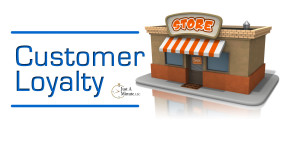Small Businesses Are Smitten with Content Marketing (For Good Reason)

Content marketing
Content marketing may be a term you’ve heard tossed about lately, and still may not know exactly what it means for your business.
Simply put, content marketing is the practice of creating, collecting, and making available fresh content for your readers. This can come in many forms, such as blog posts, articles, whitepapers, short reports, videos, podcasts, ebooks, social media and more.
We live in an age that treasures information, and the more you can provide your readers the more authority you will carry in their eyes, which can often result in better rankings, more traffic, links, and sales.
Content Marketing is getting more and more popular
According to BusinessBolts.com this year some 74 percent of businesses plan to do an increased level of content marketing. Only 4 percent are not. There are many reasons for this, among them cost-effectiveness, near-instant results and control over the medium.
With Content Marketing you are able to shape your message, control the flow, and utilize many different mediums to get your content to your market.
For example, an article or blog post may be written, posted on your site, excerpted in social media, made into a video or audio and social bookmarked across the web.
Repurposing your content for various platforms is the order of the day. Moreover, this can happen quite often, and an entire content marketing campaign can be realized quite quickly.
A real-world example of how content marketing can rock your sales
The New York Times recently profiled a Northern Virginia company, River Pools and Spas, was that watching as their sales tanked due to the housing recession of 2008. Orders shrank from six per month ($50,000 a pop) to less than two. What had been a $250,000 yearly spend on radio, TV and pay per click advertising, was now out of the question.
Instead owner Marcus Sheridan embarked on an ambitious content marketing campaign consisting of blog posts and videos, and within a short time had not only recovered but exceeded pre-recession levels.
In fact, Sheridan attributes nearly $2 million in sales to a SINGLE article he wrote on how much a fiberglass pool should cost!
Content marketing can and should be a major piece of your online marketing strategy for 2103. The good news is that it’s all within your control!









